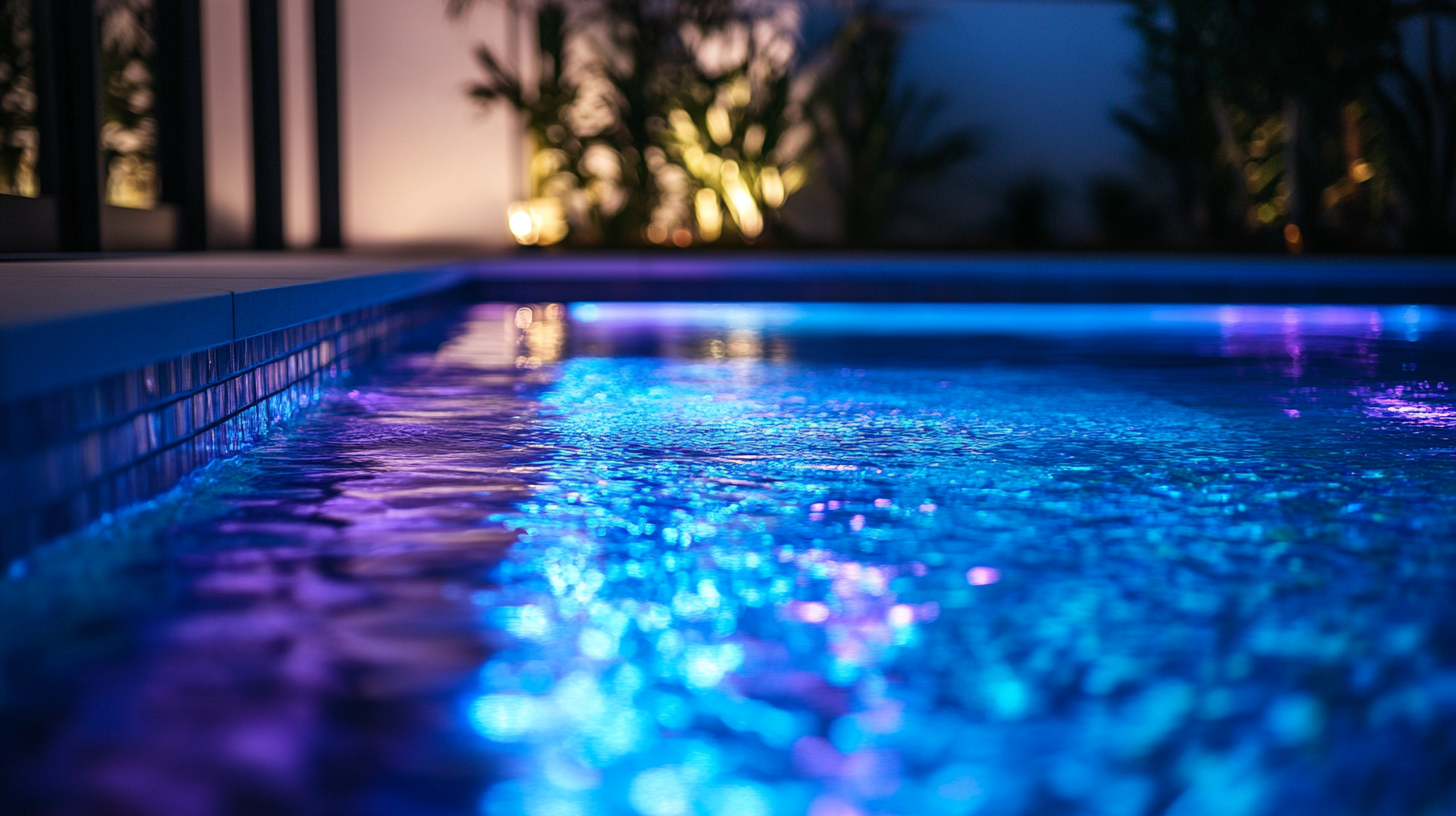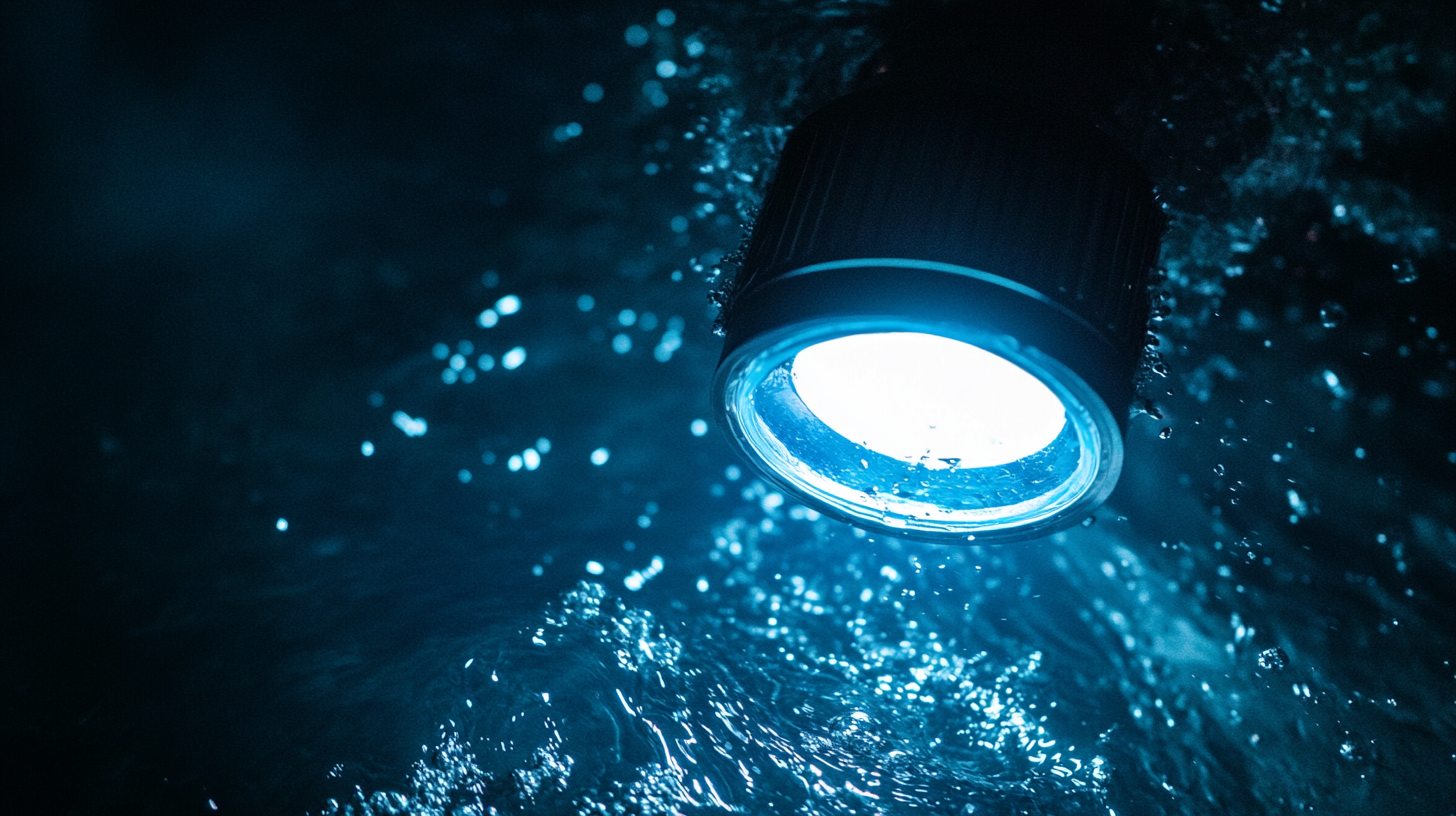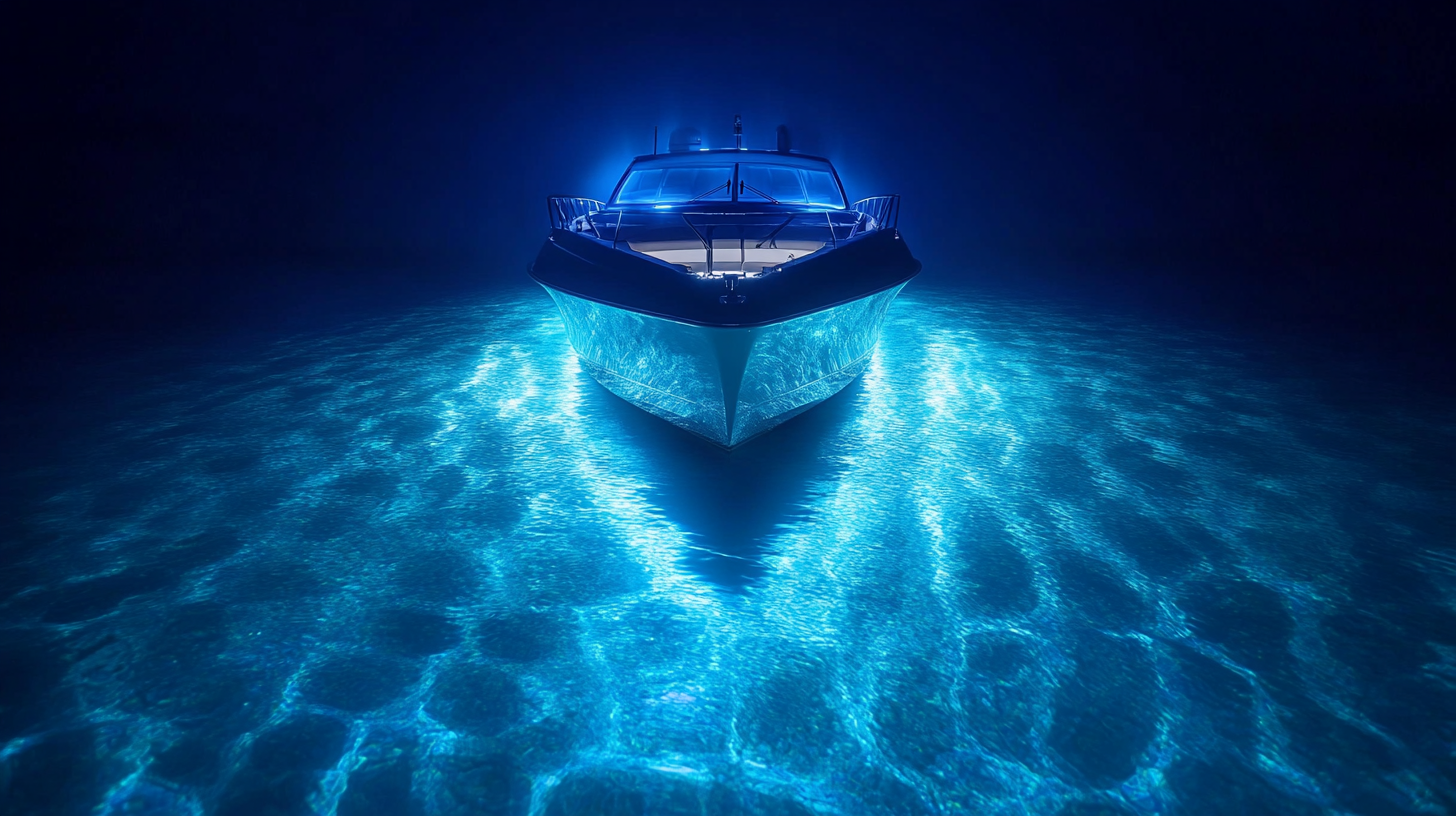Underwater pool lights: facts and myths
To truly appreciate the magic of underwater pool lights, one must first understand how they work. These lights are designed to be fully submerged and function under water without risk of electrical hazards—thanks to some clever engineering. The basic setup typically involves a waterproof housing that encloses the lightbulb and keeps out water while maintaining optimal illumination. The housing is then connected to a power source through a sealed conduit, often built into the side of the pool, ensuring that water never comes in contact with the wiring. Most pools use low-voltage systems (usually 12-24 volts AC) to increase both safety and energy efficiency.
Many types of pool lights are available, with LED technology becoming increasingly popular due to its long life and compact form. LED lights can stay cool even after hours of use, making them highly efficient for underwater lighting. Some pools still rely on halogen bulbs, which use a heated filament to produce light, but they tend to generate more heat, making them less desirable for modern designs. One of the fun facts about LED pool lights is that some are programmable, allowing users to change the color of the lights with just the touch of a button, completely transforming the ambiance of the pool during a nighttime dip.
It’s worth noting that while installing these underwater lighting systems might sound complex, most are set up during the construction or remodeling phase of a pool, ensuring a long-lasting, reliable result. Of course, there are myths floating around suggesting that pool lights pose a serious danger or that they’re difficult to maintain, but the truth is that when properly installed, they’re one of the safest (and coolest) features you can add to your pool.
Common myths about underwater pool lights
When it comes to underwater pool lights, myths are as easy to find as the lights themselves. One of the most common misconceptions is that these lights are a major electrical hazard just waiting to shock someone. This belief stems from the understandable fear of combining electricity and water, but in reality, modern underwater pool lights are incredibly safe when installed and maintained correctly. Due to strict regulations, these lights use low-voltage systems, typically around 12 volts, minimizing any risk of electrical shock. The lights are enclosed in sealed, waterproof housings, and the wiring is protected by reinforced conduits, making accidental contact between water and electricity extremely unlikely.
Another popular myth is the idea that underwater pool lights are costly to run and will cause your electric bill to skyrocket. While this may have been somewhat true in the days of halogen or incandescent lighting, it’s certainly a myth today. The rise of LED technology has revolutionized energy efficiency within pool lighting systems. Not only do LEDs use a fraction of the power required by traditional lights, but they also have a much longer lifespan, further reducing long-term costs and the need for frequent replacements.
Some people also believe that pool lights, once installed, are pretty much permanent. There’s this impression that they’re impossible to change or upgrade without draining the pool and tearing up the structure. The reality? Far less dramatic. Because of improved designs, especially with modern LED lights, many systems allow for bulb replacement or upgrades without the need to drain the pool – although the specific procedure depends on the type of light installed. Additionally, programmable LED pool lights can often be controlled remotely, letting you change the lighting color to suit your mood or event without even going near the pool.
There’s also a myth around pool lights “attracting bugs,” making your nighttime swim less than appealing. While it’s true that some insects are drawn to light, modern LED underwater pool lights emit less heat and use different wavelengths than traditional bulbs, making them less appealing to bugs. Plus, underwater lights project into the pool itself, not the surrounding air, meaning you’re unlikely to see a swarm of insects gathering at the water’s edge.
Lastly, there’s a belief that underwater pool lights are purely aesthetic and don’t offer any practical benefits beyond looking cool. While it’s hard to argue with how stunning a well-lit pool can be at night, the functional benefits of underwater pool lighting shouldn’t be overlooked. For one, they greatly improve visibility during nighttime swims, enhancing safety by illuminating steps, ladders, and the pool’s edges. They also create a pleasant, welcoming atmosphere for entertaining guests, allowing people to fully enjoy the pool well after the sun has set.
Safety considerations and regulations
When it comes to underwater pool lights, safety is always a top concern. After all, you’re combining two elements that typically don’t mix: electricity and water. However, thanks to rigorous safety regulations and advancements in lighting technology, modern pool lights are engineered to minimize risks while offering stunning visual effects. One of the most important facts to understand is that the overwhelming majority of underwater pool lights are low voltage, usually 12 or 24 volts, which significantly reduces the chances of electrical injury. This low-voltage system, coupled with waterproof housing, ensures that the lightbulb and wiring remain isolated from the water.
Still, it’s essential that the installation of these lights complies with local and national electrical codes. In the United States, these guidelines are established by the National Electric Code (NEC), which has specific clauses covering pool lighting installations. For example, safety regulations require that pool light transformers be located a specified distance from the pool itself, ensuring that if there ever were an issue, it wouldn’t pose a hazard to swimmers. Additionally, Ground Fault Circuit Interrupter (GFCI) protection is required for all underwater lighting systems. This device safeguards users by cutting off electricity the instant it detects a ground fault, such as water coming in contact with electrical circuits. GFCI protection is arguably one of the most important measures in preventing electrical accidents.
Sourcing high-quality pool lights and working with experienced professionals for installation is critical. Poorly installed or low-grade fixtures can lead to leaks, electrical issues, and even fire hazards. Contractors specializing in pool lighting will often test for any vulnerabilities in the fixture’s waterproof sealing and electrical grounding before giving it the green light for operation. Regular inspections should be carried out to ensure that all systems are functioning correctly.
For residential pools, safety isn’t just about the wiring and lighting systems; it also involves proper underwater illumination. Poorly lit pools can lead to accidents, especially around steps, ladders, or the pool’s edge. In fact, some local regulations require that certain pool features remain well-lit to improve visibility and prevent mishaps, especially when the pool is in use after dark. And let’s not forget about public pools, which usually must adhere to stricter safety standards. In these scenarios, the brightness rate (measured in lumens), bulb replacement schedules, and emergency cutoffs are carefully regulated to ensure that the pool remains hazard-free at all times.
On the flip side are the myths surrounding pool lights, some of which suggest they aren’t safe to use at all. As long as pool lights are installed and maintained according to proper guidelines, they are entirely safe for use. It’s important to recognize that the strict regulations behind underwater lighting systems were put in place to address common fears and misconceptions, especially those surrounding accidents. These rules were designed with swimmer safety as the number one priority, so if you have any concerns or doubts, rest assured that modern underwater pool lights are backed by a host of protective measures poised to keep users safe.
Energy efficiency and bulb options
When it comes to energy efficiency, the type of bulb used in underwater pool lights plays a significant role. Among the various options available, LED (Light Emitting Diode) lights shine as the most efficient and cost-saving choice. They offer several key benefits over older lighting technology, such as halogen and incandescent bulbs. One of the facts universally agreed upon by lighting experts is that LEDs consume far less energy while providing the same, if not better, brightness. On average, a standard LED bulb uses 80% less energy compared to a halogen bulb, resulting in a noticeable reduction in energy bills. While the initial cost of LED fixtures may be higher, the long-term savings in energy costs and replacement frequency make them a smart investment for pool owners looking to cut down on operational costs.
Moreover, energy efficiency isn’t just about how much power a bulb consumes; it’s also about how long it lasts. LED bulbs boast an impressive lifespan, typically ranging between 30,000 to 50,000 hours, compared to a halogen bulb’s 2,000-hour average. This means fewer replacements and maintenance over the life of the pool, further highlighting their appeal in terms of both convenience and efficiency. In fact, when you break down the costs, it’s estimated that switching from halogen to LED can save a pool owner up to 75% on annual operating expenses related to lighting.
Alongside LED lights, fiber optic lighting remains another eco-friendly option, although less popular today. Fiber optic systems project light through a single light source, often housed away from the pool, which then transmits light into the water via small optical fibers. While fiber optic technology offers ease of maintenance—since the light source is not submerged and can be easily accessed—it falls short in terms of brightness and energy efficiency compared to modern LEDs.
On the lower end of energy efficiency are incandescent and halogen bulbs, traditional technologies that, while effective at producing strong, warm light, are notorious for their energy inefficiency. Halogen bulbs, for example, convert a large amount of energy into heat rather than light. As a result, a substantial portion of the electricity used is wasted on heat production, making these bulbs less suitable for extended use in underwater environments where cooling is not as effective. Moreover, their shorter lifespan means more frequent replacements, which increases both cost and environmental waste.
In terms of heat production, LED pool lights generate significantly less heat than either halogen or incandescent options, reducing stress on the fixture itself and contributing to their longer lifespan. Aside from the efficiency and cost benefits, the reduced heat also enhances safety, as the risk of fixture damage due to overheating is minimized. Many pool owners switch to LED specifically for this reason—as the light remains cool to the touch despite extended use.
Diving into the color-changing capabilities of modern pool lighting, the majority of programmable underwater LED lights offer a range of settings, allowing users to change lighting colors with the simple touch of a remote or phone app. These lights feature RGB (Red, Green, Blue) technology, which can sometimes include additional colors, such as amber or white. Whether it’s a calm blue glow for a peaceful night swim or vibrant color shifts for a pool party, RGB LEDs offer a wide variety of aesthetic options without requiring additional energy.
To illustrate energy consumption comparison across different lighting options, here’s a simple breakdown:
| Bulb Type | Energy Usage (Watts) | Lifespan (Hours) |
|---|---|---|
| LED | 30-45 Watts | 30,000 – 50,000 |
| Halogen | 100-300 Watts | 2,000 – 4,000 |
| Incandescent | 300-500 Watts | 1,000 – 2,000 |
| Fiber Optic | 60-100 Watts | Long due to lack of submerged components |
It’s clear that LEDs offer the best combination of energy efficiency, longevity, and versatility, helping pool owners reduce overall operational costs. Additionally, many LED fixtures are compatible with smart home systems, allowing users to turn lights on and off or adjust their hue and brightness using voice commands or app-based controls. This not only adds convenience but helps save energy by ensuring lights aren’t left on accidentally.
It’s important to note that, while LED underwater pool lights represent the industry standard in energy efficiency today, selecting the right light depends on the specific needs of each pool. Owners should consider factors such as the size of the pool, the desired brightness (measured in lumens rather than watts), and any additional features like programmability or color options.
Maintenance and troubleshooting tips
Proper maintenance of your underwater pool lights ensures they stay functional, safe, and aesthetically pleasing for many years. One common myth about maintaining underwater pool lights is that it’s a highly technical process only professionals can handle. While certain tasks certainly require expertise, routine maintenance can often be carried out by the pool owner with a bit of knowledge. One key aspect of maintaining pool lights is checking the fixture periodically. Because they are submerged, seals or gaskets around the light housing can wear out over time, allowing water to seep in. This can lead to bulb failures or even electrical hazards. A quick visual inspection, looking for moisture inside the fixture, can save you a lot of trouble down the line.
If you notice the pool light is flickering or has become significantly dimmer, it might not need a full replacement—just a good cleaning! Algae, grime, and calcium deposits can build up on the surface of the light, affecting its brightness. Cleaning the lens with a soft cloth and a non-abrasive cleaner is an easy fix that can bring your pool lights back to their full glowing potential.
On the rare occasion that a bulb does need to be replaced, modern designs have made this process more accessible than ever. Most LED pool lights have a structure that allows for bulb replacements without draining the pool. It’s important to disconnect the power supply before attempting any maintenance work on these fixtures, even though they are low voltage. If you’re uncomfortable working with wiring, it’s best to consult a professional.
Another common issue pool owners encounter is water entering the light fixture due to cracked or worn gaskets. Over time, the rubber seals that keep the water out can age and crack, especially if exposed to chemicals like chlorine or bromine. Replacing these gaskets requires you to unscrew the light fixture from its niche and then swap the old gasket for a new one. For certain lights, like fiber optic systems, maintenance is even simpler, as the light source is located outside the pool, reducing contact with water entirely.
While pool lights are designed to last for many years, especially newer models with LED technology, regular inspections of the wiring and connections are a must. Periodic checks ensure there are no loose wires or areas where water could potentially reach the electrical components. Pay extra attention after any major pool renovations or refills, as changes in the water pressure or surrounding materials could affect the light’s seals and conduits.
Sometimes the issue with a pool light isn’t mechanical but operational. Unlike traditional incandescent bulbs, LED pool lights may simply need a reset if they stop changing colors or fail to turn on according to their programmed schedule. Many LED lights come with an internal reset option, often triggered by cycling the power off and then turning it back on after a specified period. If your pool light connects to a smart control system, ensure that any firmware updates have been applied, as these systems occasionally need software patches to resolve minor issues.
Don’t forget about cleaning the pool’s electrical conduit or niche—the space between the light and pool wall. Especially with older systems, leaves, dirt, or small animals can sometimes make their way into the conduit, leading to blockages or wiring damage. A quick rinse with a hose and a check for obstructions can prevent future problems. Additionally, checking with your installer or the product’s manual can clarify if there are any specific cleaning needs, like applying silicone grease around gaskets for extra protection.
If troubleshooting your underwater lights becomes too complicated or parts are beginning to show severe signs of aging, it might be time to consider an upgrade. Modern LED systems are built to last longer with limited maintenance demands, so if you find yourself frequently repairing older halogen or incandescent bulbs, an LED conversion could ultimately save you time, effort, and money.


